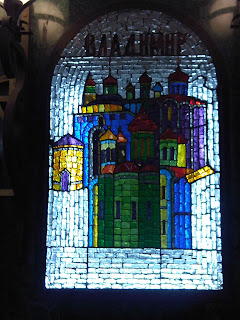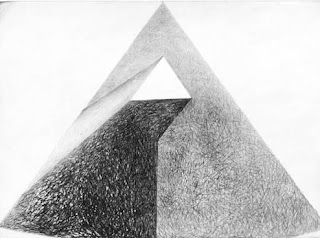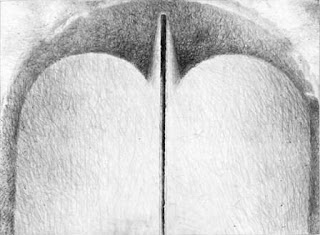When couple of years ago I had a short interview with one of YBAs for my MA research, I wasn't profoundly aware of the whole group and their works. Gradually, I went to see some works by Mat Collishaw, Tracey Emin and other artists, and finally this interest brought me to visiting Damien Hisrt retrospective at Tate Modern during my business trip to London this month.
There is a number of iconic works on the show, which set forth the narratives running through his career, while I got interested in those which were created at the emergence of his practice.
I like the referencce to the 20-th century abstract art. I find it in geometrical or 'scientific' approach to decisions on forming the plane of the painting, e.g. Josef Albers' Homage to the Square series was based on a pattern made of mathemtically formed square formats.
Nevertheless, while Albers explores the subjective color experience referring to his color studies (Albers graduated from Bauhaus, which had a particular approach to color), Damien Hisrt does not use any of traditional harmonies. I believe he does not explore colour from the viewpoint of colour perception, but investigates the colour as a phenomenon itself. I do think though that his works address viewers for their individual experiences of the piece rather than presenting his personal artistic opinion.
This geometrical approach in his Spot Paintings creates a system for generating an infinite, endless series of paintings in a variety of scales.
There is a number of iconic works on the show, which set forth the narratives running through his career, while I got interested in those which were created at the emergence of his practice.
| A Picture of Tate Modern Booklet |
 |
| Anthraquinone-1-Diazonium Chloride, 1994 Original Image Here |
I like the referencce to the 20-th century abstract art. I find it in geometrical or 'scientific' approach to decisions on forming the plane of the painting, e.g. Josef Albers' Homage to the Square series was based on a pattern made of mathemtically formed square formats.
 |
| Hommage to the Square, 1959 Original Image Here |
Nevertheless, while Albers explores the subjective color experience referring to his color studies (Albers graduated from Bauhaus, which had a particular approach to color), Damien Hisrt does not use any of traditional harmonies. I believe he does not explore colour from the viewpoint of colour perception, but investigates the colour as a phenomenon itself. I do think though that his works address viewers for their individual experiences of the piece rather than presenting his personal artistic opinion.
 |
| Spot Painting, 1986 Original Image Here |
This geometrical approach in his Spot Paintings creates a system for generating an infinite, endless series of paintings in a variety of scales.
 |
| Ethyl Fluoroacetate, 2008 Original Image Here |
Made with such medium as domestic paint, they look very common and haptically well experienced. Taking the same size and circular shape on a plane they seemed to me like cuts of painted domestic surroundings: doors, windows, cabinets and other pieces. I believe that something Damien Hirst aims to reach in his work is universality, which lets the viewers form their own relationship with his work of art and their own individual interpretation.








































